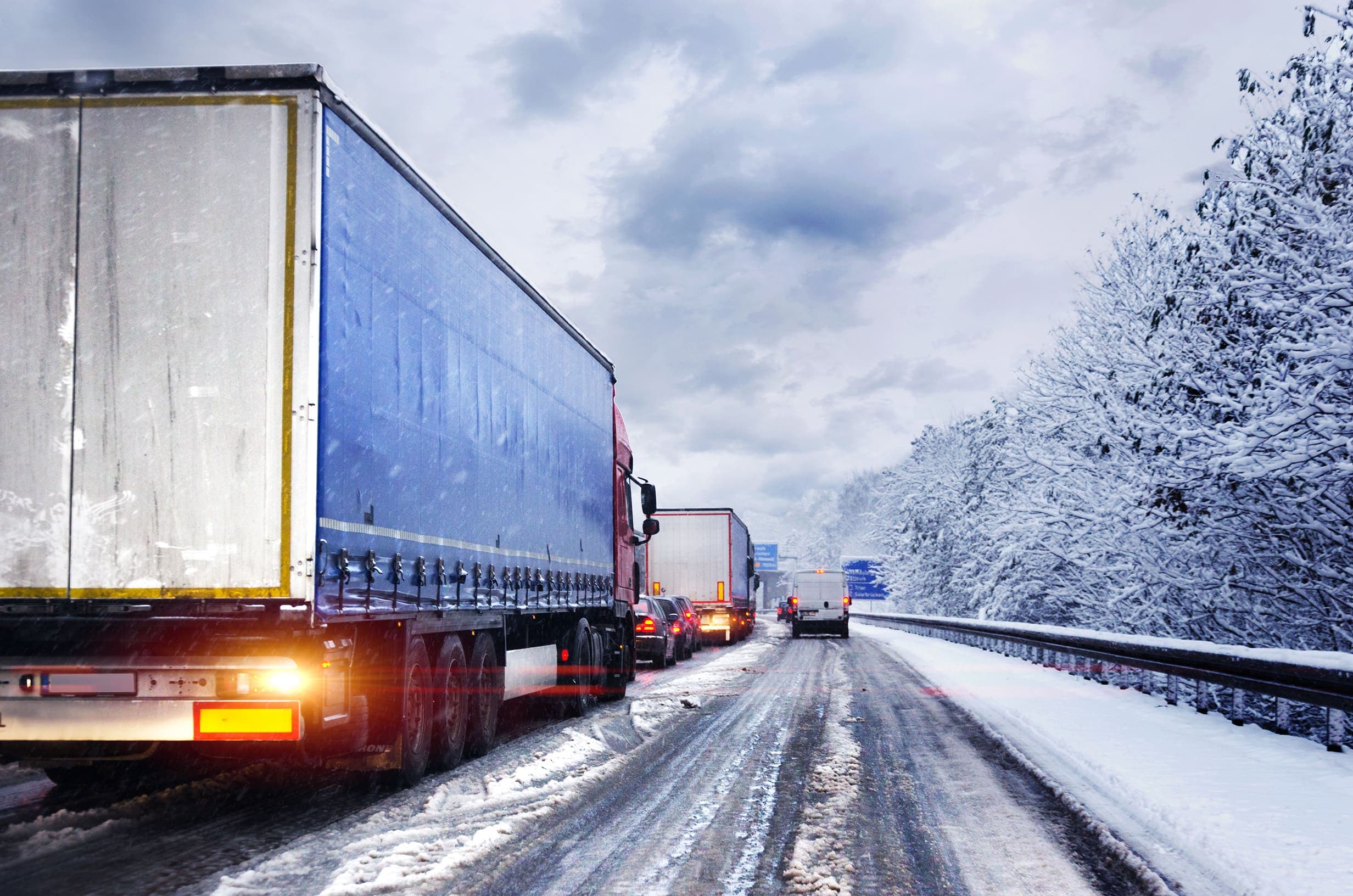How AI in Transportation will Accelerate Strategies in 2026

Trending
Top Posts
Fuel
Why Do Shippers Use The DOE Fuel Surcharge? A History Of The National Fuel Surcharge
5 min read
December 5, 2025
Market Events
How Ukrainian Drone Strikes on Russian Refineries Impact Your Fuel Costs
6 min read
November 20, 2025
Freight
The Definitive Guide on Fuel Management Systems
7 min read
November 11, 2025
6 min read
June 21, 2021

Share:
Table of contents
Browse the table of contents to jump straight to the part you’re looking for
A future fueled by alternative energy technology—like battery-electric (BEV) and hydrogen fuel cell electric (FCEV) vehicles—has been generating a lot of buzz in commercial transportation for years. And although most agree they will create valuable solutions to use in the future, shippers need to improve their carbon footprint today. Goals have been set, expectations are clear, and action needs to be taken now.
The good news is that even though we see futuristic technology being piloted and prototyped in headlines, there are effective alternative energy solutions available right now. Shippers can integrate today’s technologies, while maintaining an eye towards tomorrow’s plans, using resources at their disposal to create a solution.
This solution needs to be achievable and optimized, layering existing technology within transportation networks as they operate today, and doing so based on trustworthy data and insights. Creating this multidimensional action plan will require the right data, information, and collaborative partnerships.
Where does alternative energy use make sense? Where in a shipper’s network will implementation bring the biggest economic and emissions reduction impact? How will this technology help meet their ambitious climate goals?
Access to clean and comprehensive freight flow data internally leads to better visibility into the ways that your network is already primed to adopt new, cleaner methods of movement—and both historic and more recently captured data can play a key role in this. From biodiesel to compressed natural gas to intermodal conversion and beyond, if you know what to look for you can find ways to seamlessly make incremental improvements that drive huge results over time.
Accompanying this internal visibility with data from outside the organization will also help target alternative energy use cases in regions that drive optimal results across multiple stakeholders. Looking to the wider transportation ecosystem is a quick way to see how a little time, investment, and effort can go an even longer way.
Just about anything in today’s world feels like an internet search away. Unfortunately, finding a relevant and reliable source for transportation best practices and pressing answers about the future has become a growing challenge. Unbiased information from a trusted advisor can assist the alternative energy implementation of today and set a plan for engaging future technologies.
Incentives and opportunities are available at a state or regional level for alternative equipment, fueling infrastructure, and alternative energies themselves. Getting access to this information can improve the financial considerations and business case for low-carbon solutions. Unfortunately, not having information about incentives or which alternatives they encourage can leave these opportunities under the radar unless you ask the right—or the perfect—questions.
A great example of this is renewable diesel (RD). While many believe this fuel is synonymous with biodiesel, the chemical makeup of RD and ability to use it as a 100 percent replacement of conventional diesel in today’s equipment makes it exciting on its own merit. The challenge is that RD is still in the process of scaling up, with demand outweighing supply. This challenge also increases the expense of the fuel, making information on which providers are scaling up production and geographies that incentivize its use paramount for a RD business case.
Unbiased information for battery electric (BEV) and hydrogen fuel cell (FCEV) vehicles will also be key to their future success. Both technologies have the promise of a zero-emission future, but face challenges with cost, performance, and availability today. The good news is that investment and development for BEVs and FCEVs continues to ramp up at a fast pace, changing their outlook. Knowing how these technologies are developing and who is developing them is important. Staying informed will also help determine when and where these technologies can be piloted and ultimately commercialized in a shipper’s network.
Advanced carbon pricing mechanisms are also important for staying informed. California, Oregon, and all of Canada currently have carbon pricing plans that incentivize low carbon solutions. Similar pricing schemes are planned for states in the Northeast (2022), Washington (2023), and have been discussed in multiple other states as well. Each of these developments can expand the reach of a successful alternative energy strategy.
Few would argue that we can do more together than we can apart in many aspects of life. This adage holds true in climate plans and alternative energy strategies. Collaborating with internal stakeholders, energy providers, carriers, and other industry stakeholders can accelerate success.
Corporate climate plans and alternative energy strategies that support them are easier to tackle with alignment within a company. Aligning sustainability team members, transportation professionals, and executive sponsorship around a shared goal has become paramount. The first step: identify these individuals and make a connection to get on the same page.
Carrier partners are also key for an effective alternative energy strategy in for-hire transportation. Alternative energy strategies most often require longer-term commitments with carriers and ongoing discussions to setup a feasible plan and measure its success once alternatives are implemented. Key carrier partners can also grow with your strategy, providing long-term benefit for both companies. Partnerships with carriers can extend to include partnerships with vehicle manufacturers as well.
Additionally, the importance of energy provider relationships is growing as quickly as the availability of alternative energy options. Some of these providers are focusing on a diverse portfolio of energy types to meet a shipper’s growing needs, while others set their sights on individual energy types. Collaborating with these providers can bring better visibility to cost and emissions benefits to strengthen your program. This partnership can also bring solutions to new areas of freight density.
Finding a partner that brings all elements together can help shippers move to action on their ambitious climate goals. Breakthrough is well positioned to help your team identify their goals, find avenues to pursue it, and then bring those initiatives to life. As a proven innovator and a proud trusted advisor, we support shippers’ ability to track, plan, and execute a climate plan that is founded in accurate, transparent data and that keeps pace with the realities of a rapidly evolving marketplace.

5 min read
December 5, 2025
The DOE fuel surcharge is an outdated, inaccurate method for fuel reimbursement. Learn why it costs you money and discover a modern, market-based alternative.
Read more
6 min read
November 20, 2025
Understand the impact of Ukrainian drone strikes on Russian refineries. Learn why diesel prices are volatile and how to protect your budget from market shocks.
Read more
7 min read
November 11, 2025
Discover how fuel management systems cut costs, track emissions, and improve reimbursement accuracy for modern freight operations.
Read more